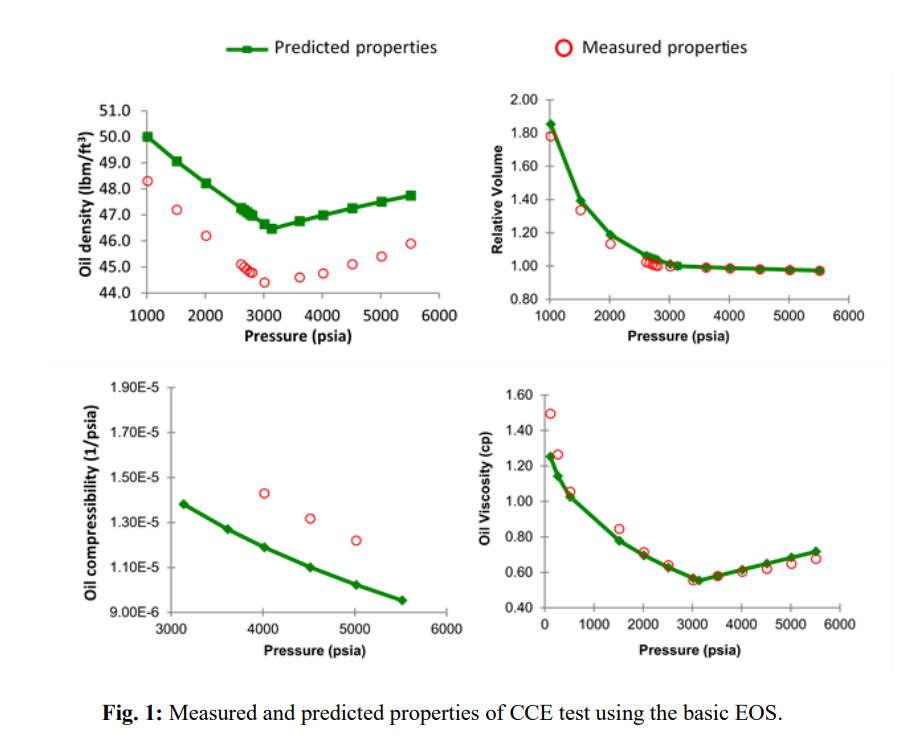Reservoir Fluids Model for a Middle Eastern Sandstone Reservoir
油藏流体性质在石油工程中至关重要,实验室测量是获取其准确物理性质的主要途径,但在许多情况下无法进行测量,因此需采用其他方法估算。本文利用多相平衡和性质测定程序,采用 Soave - Redlich - Kwong 状态方程、Peng - Robinson 状态方程及其修正形式,对中东砂岩油藏的相态行为和物理性质进行预测。首先使用 Peng Robinson 状态方程模拟实验室实验并与观测值对比,然后通过分割和归并过程调整方程参数,使其能更好地重现 PVT 实验结果。对比结果表明,分割和归并过程显著提高了对砂岩油藏 PVT 性质预测的准确性,还绘制了相态行为图,为油藏工程研究提供了重要参考。
CMG 软件应用情况
本研究采用了 CMG 公司的 WinProp 模拟器来开发 PVT 模型。WinProp 是一个多相平衡和性质测定程序,可利用 Soave - Redlich - Kwong 方程及 Peng - Robinson 方程及其修改形式预测油藏流体性质。它能模拟实验室实验,如重组分离器油气、测量压缩性、进行恒组成膨胀、差异分离、分离器测试和定容衰竭等,还可分析油藏气油系统相态行为,为 CMG 的组分模拟器 GEM 生成组分性质,并通过其图形界面进行数据准备、计算、结果查看和绘图等操作,在整个研究过程中对模型构建和数据分析起到了关键作用。
作者:Doaa Saleh Mahdi 巴格达科技大学石油技术系
Emad A. Al-Khdheeawi 巴格达科技大学石油技术系
Duraid Al-Bayati 科廷大学石油工程系、基尔库克大学石油工程系
Christopher Lagat 基尔库克大学石油工程系
Abstract
Knowledge of the properties of reservoir fluids are very important in petroleum reservoir engineering (e.g. estimation of reserves in an oil reservoir, well test inflow performance calculations, and numerical reservoir simulation). The process of obtaining accurate values for these physical properties for hydrocarbon is most important in different oil industries. The main resource to get these properties is laboratory measurements but in many cases these measurements not available, thus other methods can be used to estimate these properties. This paper concerns with the prediction of the phase behavior and physical properties for a Middle Eastern sandstone reservoir by using multiphase equilibrium and properties determination program.
Soave-Redlich-Kwong Equation of State & Peng-Robinson’s Equation of State and its modifications have been used to calculate the physical properties of reservoir fluid. To do so, each laboratory experiment was first simulated with the cubic Peng Robinson EOS without performing any regression and compared to the laboratory observations (PVT) as primarily results. Then splitting and lumping processes were used to tune or characterize the EOS so that it can reproduce the PVT experiments. The calculated PVT properties from these two steps are compared with the measured PVT data and the results show that the splitting and lumping processes given a good accuracy in predicting the PVT properties of the sandstone reservoir.




